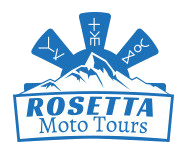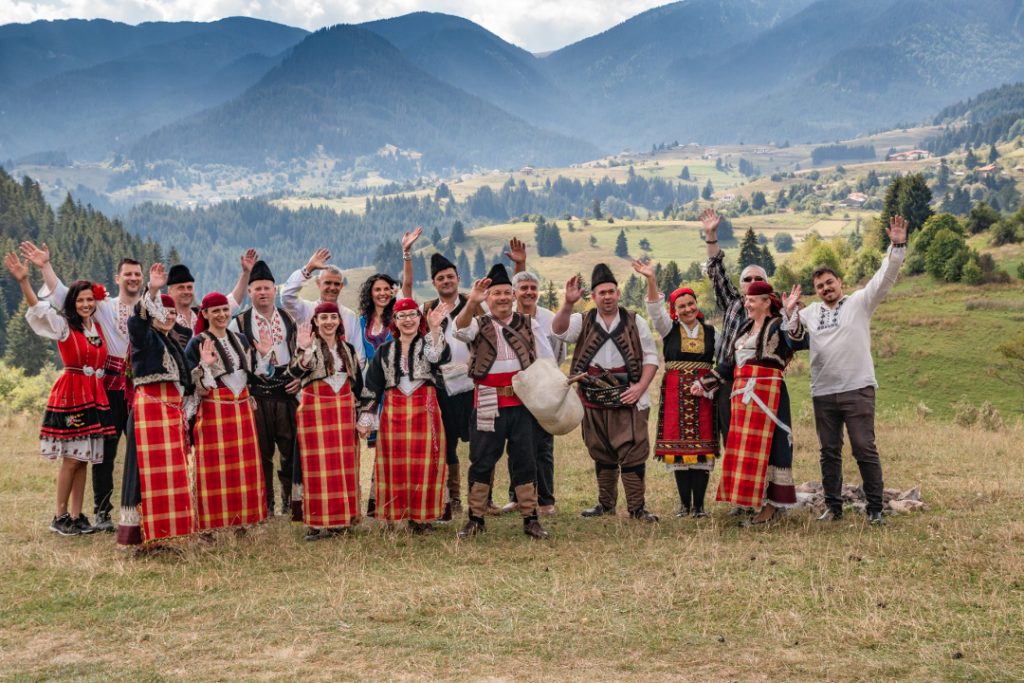Music
Bulgaria has a long-standing musical tradition which music historians can trace back to the early Middle ages. One of the earliest known composers of Medieval Europe, Yoan Kukuzel (ca. 1280-1360), became famous for his work Polieleion of the Bulgarian Woman. About 90 of his works have survived. Kukuzel also reformed the Byzantine musical writing system, and became known as The Angel-voiced for his singing abilities.
Bulgarian folk music is unique in its complex harmonies and highly irregular rhythms. These kinds of rhythms, also called uneven beats or asymmetric measures, were introduced to musicologists only in 1886 when music teacher Anastas Stoyan published Bulgarian folk melodies for the first time. Examples of such beats are 5/8, 7/8, 8/8, 9/8 and 11/8, or composite ones like (5+7)/8, (15+14)/8 and (9+5)/16 - (9+5)/16. Each area of Bulgaria has a characteristic music and dance style.
Bulgarian folk music inspired and was used by musicians such as Lisa Gerrard, Kate Bush and George Harrison.
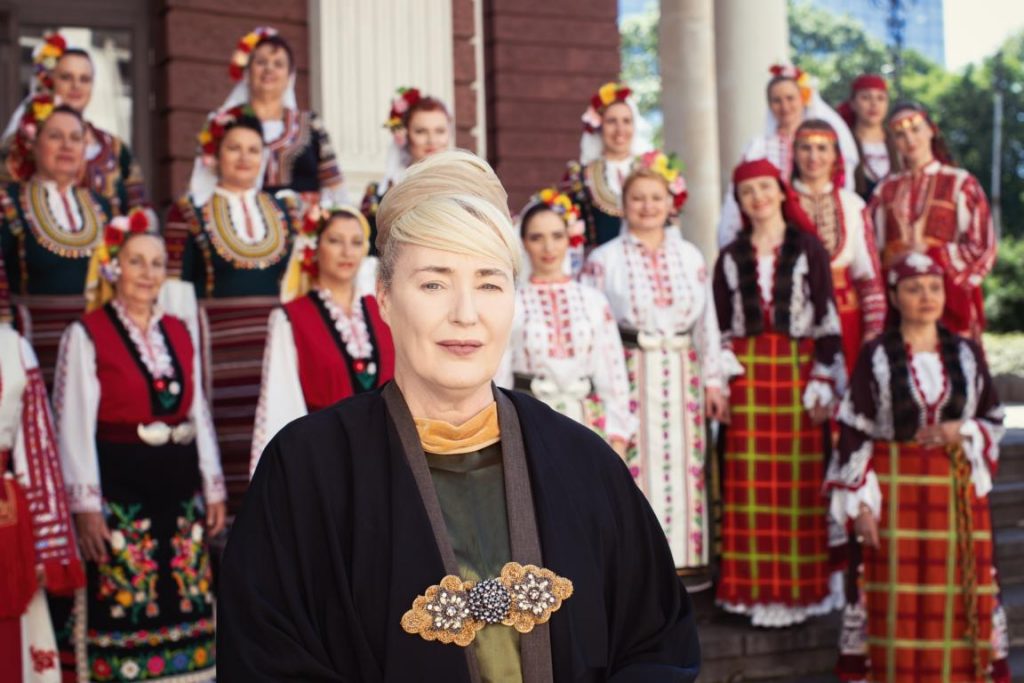
Here’s what Lisa Gerrard says for the Bulgarian women’s choir singing:
“The Bulgarian Voices are everything I ever wanted from music. What’s so interesting about their singing is how it makes you burst into tears, it’s just beautiful. That’s what moved me so when I first heard them. I felt pure joy, pure beauty. Why wouldn’t I want to bask in the light of that? I love the fact that they have in their mouths the most angelic cathedrals I’ve ever heard in my life, yet they’re just ordinary women. They don’t go around like gurus with philosophical explanations of what this and that is…. but when they sing, they break your heart because it’s so beautiful. And they’re the most amazingly humble people I’ve ever met; no expectations besides coming together to sing. Fantastic.”
A curious fact:
Did you know, that during our Gala dinner you’ll be able to witness this wonder yourselves?
No!? Now you already know it for sure!
Find out our 7-days tours and don’t hesitate to book any of them. On every such tour with us you’ll have the same experience as Lisa Gerrard!
Bulgarian vocal style has a unique throat quality, while the singers themselves are renowned for their range. Their voices are low and soprano and the children love singing as well as anything artistic. Diatonic scales predominate but in the Rhodope mountains, for example, pentatonic scales occur, while in Thrace chromatic scales with augmented intervals (similar to the music of Classical Greece). Also, the intonation varies, and is quite different from the modern Western equal temperament. Depending on whether the melody moves up or down, an interval can augment or decrease by a quarter tone.
Musical instruments (also characteristic of the whole Balkan region) include gaida гайда (bagpipe), kaval кавал (rim-blown flute), zurna or zurla зурна (another woodwind, similar to oboe typical among Roma), tambura тамбура (long-necked lute), gadulka гъдулка (bowed instrument held upright).
The gaida of Bulgaria is worthy of its own subsection. In Bulgaria the gaida has been a long symbol of the country and its heritage, and is one of the more well-known instruments of the country. The gaida most widely used is the Thracian gaida. There is in the Rhodope mountains the deep-sounding kaba gaida. In the north, common of Dubrudzha and the Vlachs there is the dzhura gaida. Also in the Stranzha region near the border with Turkey there is the Stranzha gaida. The bag itself is made of a goat skin turned inside out, and most often the rims of the different parts of the instrument – chanter and drone pipe – have a piece of horn on it.
Dances have complex steps matching the rhythms, and are often fast. Most are circle-dances or line dances called horo; but some are done singly or in pairs.
Although traditional music and dance are not popular among Bulgarian city youth, they are often performed at weddings, and generally in countryside festivals. They are also performed in Bulgaria and abroad by amateur and professional performing artists and choirs.
Regional folk musical styles abound in Bulgaria. Dobrudzha, Sofia, Rodopi, Macedonia, Thrace and the Danube plain all have distinctive sounds. Much of traditional folk music revolved around holidays like Christmas, called in Bulgaria also Koleda, New Year’s Day, midsummer, and the Feast of St. Lazarus, as well as the Strandzha region’s unusual Nestinarstvo rites on May 21.
The biggest Nestinary ritual takes part in the village of Bulgari, every year on the exact same date – 3rd of June, no matter of the day of the week. This is considered to be the most genuine celebration of the fire dancing ritual.
Several world-renowned troupes perform Bulgarian folk music, including the State Ensemble for Folk Songs and Dances, founded by Philip Koutev (1903-1982), Trio Bulgarka and the Bulgarian State Television Female Vocal Choir, who are featured, among others, on the anthologies titled Le Mystère des Voix Bulgares, volume 2 of which received a Grammy Award in 1989.
One internationally known artist, Valya Balkanska, sang the song Izlel e Delyu Haydutin, which was chosen to be part of the Voyager Golden Record selection of music sent into space in the two Voyager spacecraft launched in 1977. The Bulgarian State Television Female Vocal Choir also known as Mystery of Bulgarian voices has also attained a considerable degree of fame.
Read more …
Customs and rites
Bulgarians often give each other a martenitsa (мартеница) — an adornment made of white and red yarn and worn on the wrist or pinned on the clothes — from March 1 until the end of the month. Alternatively, one can take off the martenitsa earlier if one sees a stork (considered a harbinger of spring). One can then tie the martenitsa to the blossoming branch of a tree. Family-members and friends in Bulgaria customarily exchange martenitsas, which they regard as symbols of health and longevity. The white thread represents peace and tranquility, while the red one stands for the cycles of life. Bulgarians may also refer to the holiday of 1 March as Baba Marta (Баба Марта), meaning Grandmother March. It preserves an ancient pagan tradition. Many legends exist regarding the birth of this custom, some of them dating back to the 7th-century times of Khan Kubrat, the ruler of Old Great Bulgaria. Other tales relate the martenitsa to Thracian and Zoroastrian beliefs. Romania and some parts of Greece also have a similar custom.
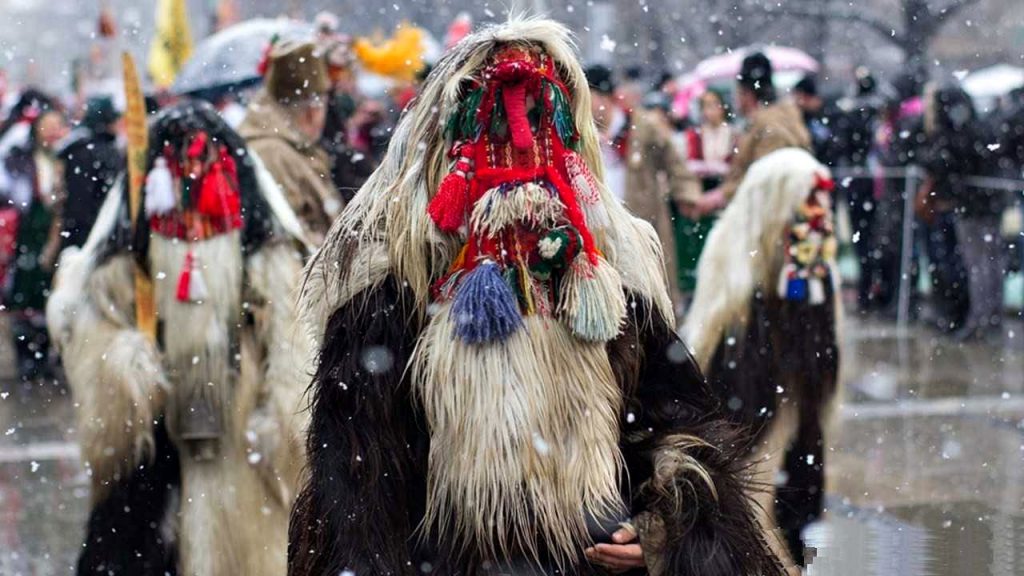
The ancient Bulgarian ritual of kukeri (кукери), performed by costumed men, seeks to scare away evil spirits and bring good harvest and health to the community. The costumes, made of animal furs and fleeces, cover the whole of the body. A mask, adorned with horns and decoration, covers the head of each kuker, who also have bells attached to his waist. The kukeri dance, jump and shout in an attempt to banish all evil from the village. Some of the performers impersonate royalty, field-workers and craftsmen. The adornments on the costumes vary from one region to another.
Some scholars believe, that this rite is a direct descendant of Dionysus’ Bacchanalia demons.
One shouldn’t argue, if know, that Dionysus is from Thracian origin!
Check out our Expedition “Dionysis” and you’ll find how deep the rabbit hall goes!
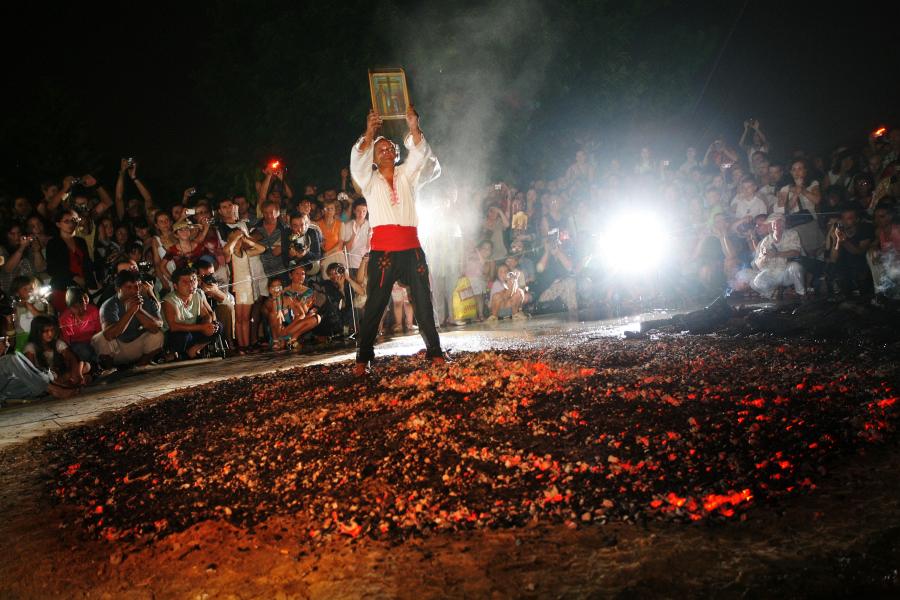
Another characteristic custom called Nestinarstvo (Нестинарство), or firedancing, is found in the Strandzha region. This ancient custom involves dancing into fire or over live embers. Women dance into the fire with their bare feet without suffering any injury or pain.
Take a look at this video …
Read more …
UNESCO world heritage sites
Bulgaria has nine UNESCO World Heritage Sites:
- The early medieval large rock relief Madara Rider
- Two Thracian tombs (one in Sveshtari and one in Kazanlak)
- Three monuments of medieval Bulgarian culture (the Boyana Church, the Rila Monastery and the Rock-hewn Churches of Ivanovo)
- Two examples of natural beauty: the Fisherman Momerioland the Sreburna Nature Reserve
- The ancient city of Nessebur — a unique combination of European cultural interaction, as well as, historically, one of the most important centres of seaborne trade in the Black Sea
- “Surva“- International Kukeri Festival in Pernik, Bulgaria. One of the biggest masquerade festival on the Balkans and Eastern Europe. Conducted in the last three days of January. Kukeri or Surva Festival (Mummer’s games) in the town of Pernik, is the most spectacular “Kukeri” event in Bulgaria. At the end of January thousands of “kukeri” participants from different regions of Bulgaria, as well as from all around the world gather in Pernik for the three-day event. The festival held in Pernik is the oldest festival of the masquerade games in Bulgaria. The first edition was opened on January 16, 1966. In 1995 the International Federation of Carnival Cities accepted the town of Pernik as its full member. In 2009 Pernik was proclaimed as the European capital of Surva`s and Mummer’s. The news that the Kukeri tradition and the Surva Festival in Pernik will be included in UNESCO’s list of protected non-material cultural heritage, was announced before the inaugural ceremony of the 20th edition of the mummery fest in 2015.
Local archaeologists assume that the number of archaeological sites is the third-largest in Europe after Italy and Greece.
Read more …
Cuisine
The relatively warm climate and diverse geography afford excellent growing conditions for a variety of vegetables, herbs and fruits, Bulgarian cuisine (Bulgarian: българска кухня, bulgarska kuhnya) offers great diversity.
Famous for its rich salads required at every meal, Bulgarian cuisine also features diverse quality dairy products and a variety of wines and local alcoholic drinks such as rakia (ракия), mastika (мастика) and menta (мента). Bulgarian cuisine also features a variety of hot and cold soups, for example tarator. Many different Bulgarian pastries exist as well, such as banitsa, a traditional pastry prepared by layering a mixture of whisked eggs and pieces of Bulgarian cheese with filo pastry and then baking it in an oven.
Traditionally, Bulgarian cooks put lucky charms into their pastry on certain occasions, particularly on Christmas Eve, the first day of Christmas, or New Year’s Eve. Such charms may include coins or small symbolic objects (such as a small piece of a dogwood branch with a bud, symbolizing health or longevity). More recently, people have started writing happy wishes on small pieces of paper and wrapping them in tin foil. Messages may include wishes for happiness, health, long life or success throughout the new year.
Bulgarians eat banitsa — hot or cold — for breakfast with plain yogurt, ayran, or boza. Some varieties include banitsa with spinach (спаначена баница / spanachena banitsa) or the sweet version, banitsa with milk (млечна баница / mlechna banitsa) or pumpkin (тиквеник / tikvenik).
The Bulgarian lyutenitsa (лютеница) is a spicy mixture of mashed and cooked tomatoes, aubergines, garlic, hot peppers and vegetable oil, seasoned with salt, pepper and parsley. Variations of lyutenitsa exist in the national cuisines of most Balkan states.
Tripe soup (шкембе чорба / skhembe chorba) takes as its basis the thick lining of the cleaned stomach of cattle, prepared with milk and seasoned with vinegar, garlic and hot peppers. Under Ottoman rule, the sultans allegedly preferred tripe soup made by Bulgarian cooks, whose mastery in preparing the dish remained unmatched in the Balkans.
Exports of Bulgarian wine go worldwide; and until 1990 the country exported the world’s second-largest total of bottled wine. The rich soil, perfect climate and the millennia-old tradition of wine-making, which dates back to the time of the Thracians, contribute to the wide variety of fine Bulgarian wines. As of 2007, Bulgaria produced 200,000 tonnes of wine annually, ranking 20th in the world.
Read more …
Religion
Bulgaria is officially a secular nation and the Constitution guarantees the free exercise of religion but designates Orthodoxy as a “traditional” religion. In the 2001 census, 82.6% Bulgarians declared themselves Orthodox Christians, 12.2% Muslim, 1.2% other Christian denominations, 4% other religions (Buddhism, Taoism, Hinduism, Judaism) and zero percent atheists. Most citizens of Bulgaria have associations — at least nominally — with the Bulgarian Orthodox Church. Founded in 870 AD under the Patriarchate of Constantinople (from which it obtained its first primate, its clergy and theological texts), the Bulgarian Orthodox Church had autocephalous status since 927 AD. The Church became subordinate within the Patriarchate of Constantinople, twice during the periods of Byzantine (1018 – 1185) and Ottoman (1396 – 1878) domination. It was re-established first in 1870 in the form of the Bulgarian Exarchate, and then in the 1950s as the Bulgarian Patriarchate.
Read more …
